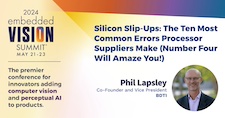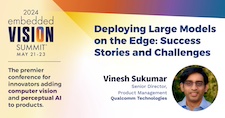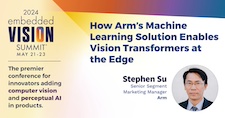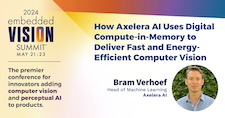|
Silicon Slip-Ups: The Ten Most Common Errors Processor Suppliers Make (Number Four Will Amaze You!)
For over 30 years, BDTI has provided engineering, evaluation and advisory services to processor suppliers and companies that use processors in products. The company has seen a lot, including some classic mistakes. (You know, things like: the chip has an accelerator, but no easy way to program it… or you can only program it using an obscure proprietary framework. Or it has an ISP that only works with one image sensor. Or the development tools promise a lot but fall far short. Or the device drivers don’t work. Or the documentation is deficient.) In this top-rated talk, Phil Lapsley, Co-founder and Vice President of BDTI, presents a fun and fast-paced review of some of the most common processor provider errors, ones seen repeatedly at BDTI. If you’re a processor provider, you’ll learn things you can do to avoid these goofs—and if you’re a processor user, you’ll learn about things to watch for when selecting your next processor!
Deploying Large Models on the Edge: Success Stories and Challenges
In this talk, Dr. Vinesh Sukumar, Senior Director of Product Management at Qualcomm Technologies, explains and demonstrates how Qualcomm has been successful in deploying large generative AI and multimodal models on the edge for a variety of use cases in consumer and enterprise markets. He examines key challenges that must be overcome before large models at the edge can reach their full commercial potential. He also highlights how Qualcomm is addressing these challenges through upgraded processor hardware, improved developer tools and a comprehensive library of fully optimized AI models in the Qualcomm AI Hub.
|
|
How Machine Learning Solutions Enable Vision Transformers at the Edge
AI at the edge has been transforming over the last few years, with newer use cases running more efficiently and securely. Most edge AI workloads were initially run on CPUs, but machine learning accelerators have gradually been integrated into SoCs, providing more efficient solutions. At the same time, ChatGPT has driven a sudden surge in interest in transformer-based models, which are primarily deployed using cloud resources. Soon, many transformer-based models will be modified to run effectively on edge devices. In this presentation, Stephen Su, Senior Segment Marketing Manager at Arm, explains the role of transformer-based models in vision applications and the challenges of implementing transformer models at the edge. Next, he introduces the latest Arm machine learning solution and how it enables the deployment of transformer-based vision networks at the edge. Finally, he shares an example implementation of a transformer-based embedded vision use case and uses this to contrast such solutions with those based on traditional CNN networks.
How Digital Compute-in-memory Delivers Fast and Energy-efficient Computer Vision
As artificial intelligence inference transitions from cloud environments to edge locations, computer vision applications achieve heightened responsiveness, reliability and privacy. This migration, however, introduces the challenge of operating within the stringent confines of resource constraints typical at the edge, including small form factors, low energy budgets and diminished memory and computational capacities. Axelera AI addresses these challenges through an innovative approach of performing digital computations within memory itself. This technique facilitates the realization of high-performance, energy-efficient and cost-effective computer vision capabilities at the thin and thick edge, extending the frontier of what is achievable with current technologies. In this talk, Bram Verhoef, Head of Machine Learning at Axelera AI, unveils his company’s pioneering chip technology and demonstrates its capacity to deliver exceptional frames-per-second performance across a range of standard computer vision networks typical of applications in security, surveillance and the industrial sector. This shows that advanced computer vision can be accessible and efficient, even at the very edge of our technological ecosystem.
|






